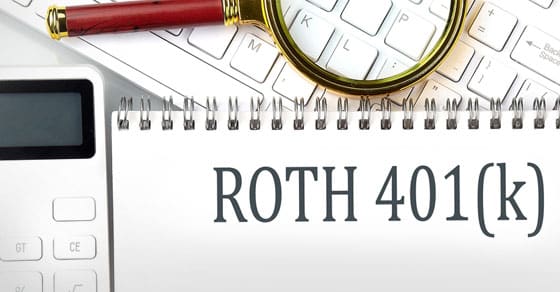Many people are familiar with Roth IRAs. These popular retirement accounts feature tax-free withdrawals as long as certain conditions are met. But did you know that employers can offer designated Roth contributions as part of the 401(k) plans they sponsor for employees?
Indeed, it is possible — but you’ll want to familiarize yourself with the finer points of this feature before adding it to your organization’s plan.
Key differences
Roth contributions differ from other elective deferrals in two key tax respects. First, they’re irrevocably designated to be made on an after-tax basis, rather than pretax. Second, if all applicable requirements are met and the distribution is a “qualified distribution,” the earnings won’t be subject to federal income tax when distributed.
To be qualified, a distribution generally must occur after a five-year waiting period, as well as after the participant reaches age 59½, becomes disabled or dies. Because of the different tax treatment, plans must maintain separate accounts for designated Roth contributions.
Upsides and risks
The Roth option gives participants an opportunity to hedge against the possibility that their income tax rates will be higher in retirement. However, if tax rates fall or participants are in lower tax brackets during retirement, Roth contributions may provide less after-tax retirement income than comparable pretax contributions. The result could also be worse than that of ordinary elective deferrals if Roth amounts aren’t held long enough to make distributions tax-free.
Nonetheless, if your organization employs a substantial number of relatively highly paid employees, a Roth 401(k) component may be well-appreciated. This is because participants can make much larger designated Roth 401(k) contributions than they can for a Roth IRA. In 2023, the limit is $22,500 for designated Roth 401(k) contributions versus $6,500 for Roth IRA contributions.
Catch-up contributions for individuals 50 or older are also considerably higher for designated Roth 401(k) contributions than they are for Roth IRA contributions. In 2023, the limit is $7,500 for designated Roth 401(k) catch-up contributions versus $1,000 for Roth IRA catch-up contributions.
Naturally, participants will need to know what they’re getting into. They’ll have to consider current and future tax rates, various investment alternatives, and the potential loss of some rollover options. They’ll also need to anticipate the risk of needing a distribution before they qualify for tax-free treatment of earnings, which would trigger taxation of those earnings.
For plan sponsors, the separate accounting required for Roth contributions may raise plan costs and increase the risk of error. (One common mistake: treating elected contributions as pretax when the participant elected Roth contributions, or vice versa.)
And because Roth contributions are treated as elective deferrals for other purposes — including nondiscrimination requirements, vesting rules and distribution restrictions — plan administration and communication will be more complex.
Look before you leap
The addition of Roth contributions to your employer-sponsored 401(k) could be an enticing enhancement for job candidates and current employees. However, you’ll need to determine whether your participants will truly value and use the feature before you revise your plan. We can assist you in deciding whether this would be an advisable move for your organization.
© 2023




